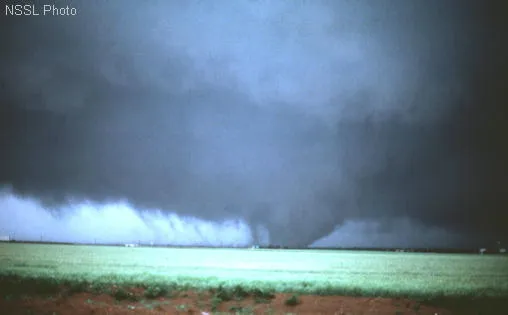Double Tornadoes Aren’t Particularly Rare, But Yesterday’s Was Remarkable
Double, triple, quad and quintuple tornadoes are more common than you’d think
In Pilger, Neb., yesterday two people died, 16 were injured, and the bulk of the town's houses were destroyed when a terrifying double tornado tore through. In the stunning video above, by StormChasingVideo, you can see the twin twisters in action.
Double tornadoes are not something you hear about often, but that doesn't mean they're all that rare. While small singular tornadoes are the most common type of twister, multi-vortex tornadoes occur regularly, too. Double tornadoes are not unusual, and even triple, quad or quintuple tornadoes have been seen, says the National Oceanic and Atmospheric Administration.
“Typically, the larger, more damaging tornadoes are multiple vortex tornadoes, and that means they are not rare occurrences,” says the News and Observer. According to NOAA, the reason we don't see double tornadoes often is because most of the time they're hard to see—the separate twisters are often obscured by dust and debris.
There were a couple of things that made yesterday's Pilger tornadoes stand out, though. For one, says Reuters, both tornadoes touched down simultaneously, where normally one would precede the other. Then, says Andrew Freedman for Mashable, there's the fact that both tornadoes were spinning in the same direction, “[m]aking this even more unusual, from a scientific standpoint.” The Washington Post adds another wrinkle: both tornadoes were quite strong, where usually one is much weaker than the other.
Jeff Masters explains, at Weather Underground:
While it is common for large, violent tornadoes to form multiple funnels that rotate around each other, Monday night's Pilger, Nebraska twin tornadoes were not one of these standard "multi-vortex" entities. The Pilger tornadoes were separated by 2 - 3 miles, and were both spawned by the same isolated supercell thunderstorm. A rotating supercell thunderstorm typically has just one center of rotation and spawns only one tornado, but Monday's storm was so massive that it was able to form two centers of rotation that each spawned large and destructive tornadoes.
Here, for instance, is a multi-vortex tornado with six or seven vortices:

It's powerful, yes, but nowhere near as jaw-dropping as yesterday's twin twisters.
/https://tf-cmsv2-smithsonianmag-media.s3.amazonaws.com/accounts/headshot/smartnews-colin-schultz-240.jpg)


/https://tf-cmsv2-smithsonianmag-media.s3.amazonaws.com/accounts/headshot/smartnews-colin-schultz-240.jpg)